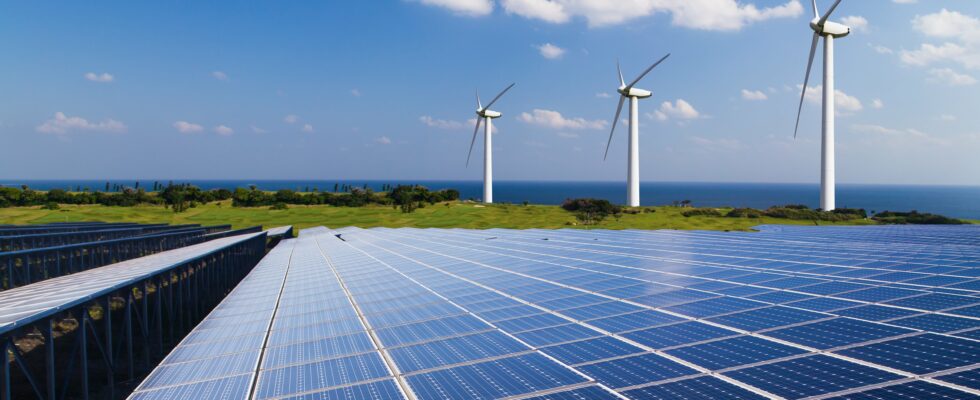“The weather has become much less gloomy, but the horizon has not cleared up.” In the political turmoil of recent weeks, the words of an energy specialist sum up the state of mind of the renewable energy sector. For several weeks, the green energy production sector has been holding its breath. The threat of the far right coming to power, which supported in its program the desire to establish a moratorium on “intermittent energies”, raised fears of a severe setback for the wind and solar sectors. “What is ruled out today is the prospect of a global moratorium and a renunciation of decarbonization, but it is still difficult to say what the alternative will be,” notes Jules Nyssen, the president of the Syndicat des énergies renouvelables, which represents the sector.
The uncertainty now comes from the artistic vagueness surrounding the composition of the National Assembly. The results of the legislative elections do not suggest a clear majority to form a government, and the scattering of political labels questions the ability of deputies to agree on certain key texts. “For the moment the elections bring some relief, but we are waiting to see how the political situation will affect the processes in progress,” explains Vattenfall, a Swedish energy company that is developing offshore wind projects in France and is positioning itself on future offshore calls for tenders.
A possible compromise?
In reality, the sector has been waiting for several months for the roadmaps structuring France’s energy future. The strategy in this area must be defined by two main texts: on the one hand, the Energy Climate Programming Act (LPEC), which aims to align energy objectives with France’s climate strategy, and the Multi-annual Energy Programming (PPE), which must detail by sector the objectives to be achieved by 2030. These two texts were to be adopted by the National Assembly, but they have been postponed many times, in particular due to a government majority that is already nowhere to be found in the Chamber.
Reducing greenhouse gas emissions by at least 55% by 2030, increasing the share of renewables in the energy mix, or reducing energy consumption by 30%… Will the deputies agree on the objectives previously discussed in the context of the bill on the subject? On the left, renewable energies are among the priorities of the New Popular Front. But representatives of the sector emphasize that political groups – from the left to the right, including the center – can agree on the decarbonization and energy mix objectives presented by RTE, including a share of nuclear power and the development of renewables. “There is a consensus among the different groups on the trajectories to follow by 2035, the compromise must be able to be found around these texts”, judges Michel Gioria, general delegate of France renouvelable.
The sustainability of the coalition in question
Ensuring visibility for the sector will be essential to maintain investments and support future calls for tenders. “For the renewable energy sector, these roadmaps raise very concrete questions for all stakeholders; without clear objectives by 2030, the day-to-day business machine risks seizing up,” insists Andreas Rüdinger, Energy Transition France coordinator at the Institute for Sustainable Development and International Relations (IDDRI). A subject that should become all the more urgent as the debate on finances could take place in September: “If we do not formalize the 2030 climate ambition in law, the debates on financing the green ambition will remain very complex. This is why we need these political markers to fuel and structure the discussions.”
Finally, in the more or less long term, the question of the sustainability of this future coalition arises. Many are worried about seeing a new dissolution looming in a year’s time, which could benefit the National Rally, and signify the return of the threat for an entire sector. “The RN still exists, it has a significant score and their fundamentals in terms of energy policy are still dangerous,” insists Michel Gioria. A way of reminding us that when it comes to wind turbines, the wind can change quickly.
.
